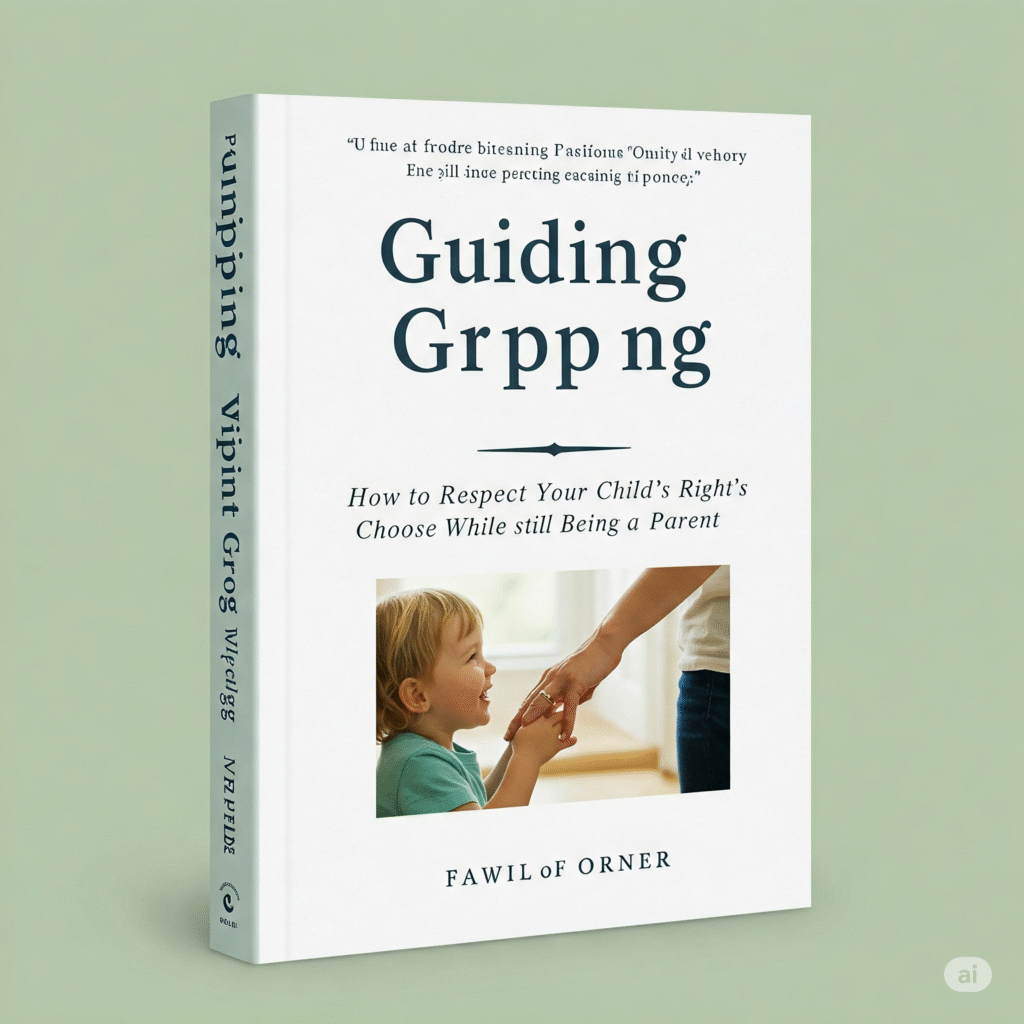Guiding Without Gripping: How to Respect Your Child’s Right to Choose While Still Being a Parent

It’s easy to confuse guidance with control. This reflective article explores how to nurture independence, honor children’s choices, and stay connected—without being overbearing.
CHARACTER LEARNING – One day, my daughter came downstairs wearing an outfit that looked—let’s just say—very different from what I would have chosen for her. Bright stripes with polka dots, mismatched socks, glittery shoes. She was glowing with pride.
I opened my mouth, ready to suggest a change. But something stopped me.
She was happy. Confident. Herself.
I swallowed my comment, smiled, and said, “That’s a bold choice. I love that you feel good in it.”
It wasn’t easy. But it was important.
That moment reminded me: parenting is not about molding our children into little versions of us—it’s about guiding them into becoming more of themselves.
And there’s a big difference between guiding and controlling.
The Slippery Slope of Control
Most parents don’t set out to be controlling. We love our kids. We want the best for them. We want to protect them from poor decisions and unnecessary pain.
But control often creeps in quietly—dressed as “helping,” “correcting,” or “being realistic.”
We choose their clothes, their hobbies, their social circles, their futures.
We step in before they fail.
We correct them before they even finish a sentence.
It feels like we’re doing our job.
But here’s the question: Are we helping them grow—or just shaping them into what’s most comfortable for us?
What Control Feels Like to a Child
Children who are over-controlled don’t feel loved more. They feel trusted less.
They may become compliant, but not confident.
They may obey, but they don’t learn how to decide.
They may succeed—but often in things they didn’t choose.
Over time, control tells a child:
“I don’t believe you’ll make the right choice unless I’m steering.”
And even if the intention is love, the impact is often fear, pressure, or self-doubt.
What It Means to Guide
Guidance is something very different.
It doesn’t shrink your child’s voice—it amplifies it.
It doesn’t make choices for them—it helps them make choices with wisdom.
To guide means to:
- Ask questions instead of giving answers
- Set boundaries that protect, not punish
- Offer support, not surveillance
- Hold space for failure as part of growth
- Encourage exploration over obedience
When we guide, we say:
“I’m walking beside you, not dragging you forward or holding you back.”
Why It’s Hard to Let Go
Let’s be honest—it’s scary to let go.
We fear our child will mess up, get hurt, or fall short. And sometimes, letting them choose feels like we’re not doing enough.
But real strength as a parent often looks like restraint.
It’s choosing to pause before correcting, to watch before stepping in, to listen without immediately fixing.
And maybe the hardest part: letting our child become someone we didn’t expect—but someone true.
How to Shift from Controlling to Guiding
1. Start With Curiosity, Not Criticism
Before correcting or “redirecting,” ask yourself:
Why do I feel the need to control this moment?
Is it about safety, or comfort? Values, or image? Often, our reactions say more about us than about our kids.
2. Ask Before Advising
Instead of jumping in with advice, ask:
“Do you want help with that, or do you want to try on your own first?”
This respects their process and shows trust.
3. Set Boundaries, Not Traps
Boundaries are important—but they should be clear, kind, and flexible enough to evolve. They should keep kids safe, not stuck.
For example:
🚫 Control says: “You’re not allowed to do that because I said so.”
✅ Guidance says: “Let’s talk about why that choice worries me. I want you to be safe and confident.”
4. Allow Age-Appropriate Choices
Even toddlers can start choosing their clothes. Teenagers should have a say in their schedules, passions, and plans. Independence doesn’t start at 18—it starts with tiny choices every day.
5. Let Them Learn Through Natural Consequences
Sometimes, the best teacher is experience. If your child forgets their lunch, they’ll remember it better next time. If they struggle through a challenge, they’ll gain confidence in problem-solving.
Your job? Support, don’t rescue.
What Happens When Children Are Allowed to Choose
When children are allowed to choose—with guidance, not force—they learn some powerful things:
- That they are capable
- That their voice matters
- That mistakes are part of growth
- That love doesn’t disappear when they mess up
- That they can trust themselves
These lessons last far beyond childhood.
They build adults who know how to lead themselves, not just follow someone else’s map.
A Personal Reflection
I’ve made mistakes in this area. I’ve spoken too quickly. Controlled too tightly. Stepped in when I should’ve stepped back.
But I’ve also seen the magic that happens when I let go—just a little.
I’ve watched my kids light up when they make their own decisions. I’ve seen them become thoughtful, curious, and sometimes wonderfully unpredictable.
And I’ve realized something important: My job isn’t to write their story. It’s to hand them the pen.
Final Thought
Parenting isn’t about creating the “perfect” child. It’s about helping a real, whole human being discover who they are—and how to live with purpose, courage, and integrity.
Yes, we’ll guide.
Yes, we’ll teach.
Yes, we’ll sometimes say no.
But we’ll also step aside, trust more, and honor their right to grow on their own terms.
Because in the end, the goal isn’t control.
The goal is connection and character.
And that only happens when we choose to guide with open hands, not closed fists.[*]
